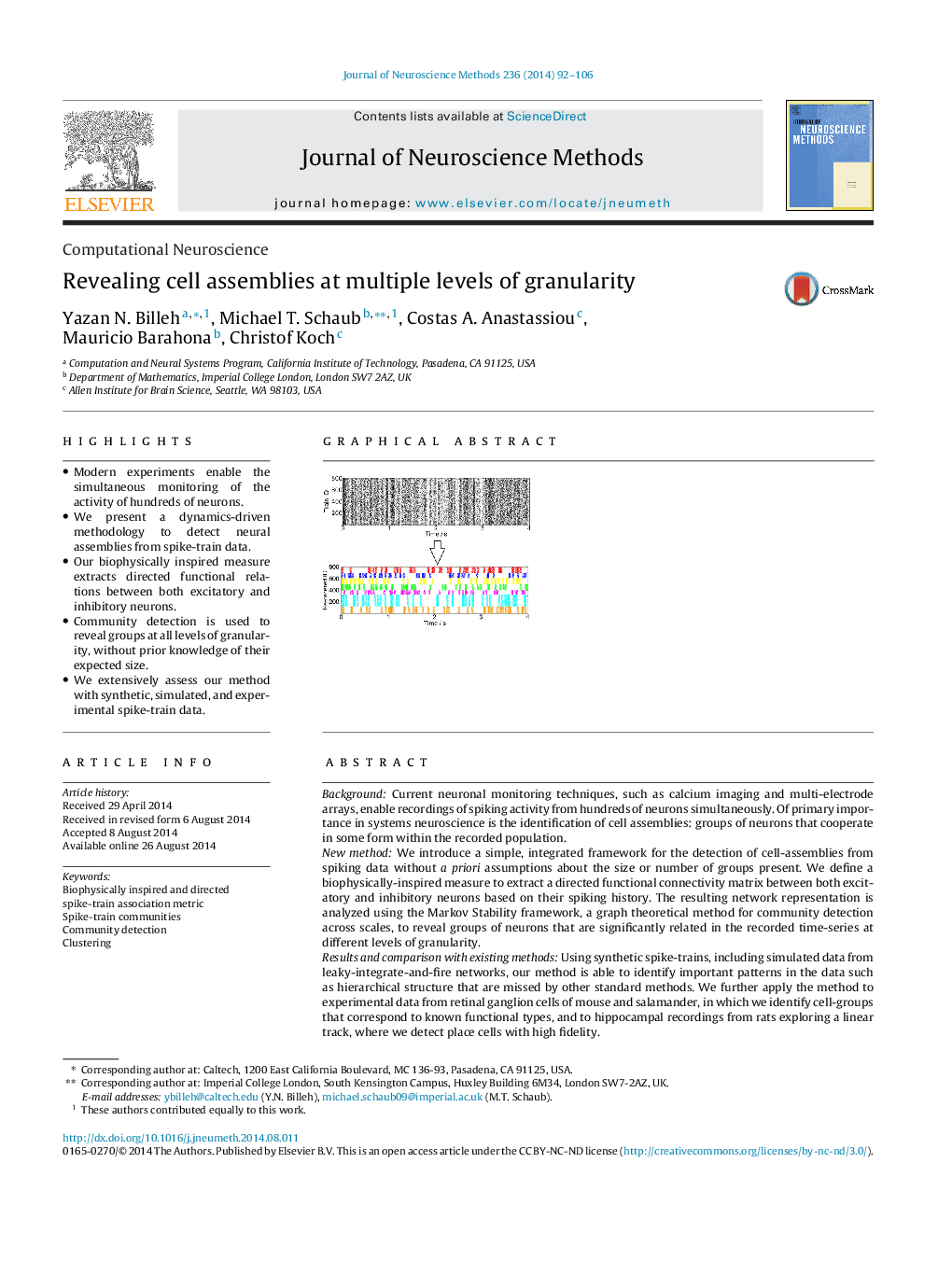| Article ID | Journal | Published Year | Pages | File Type |
|---|---|---|---|---|
| 6268581 | Journal of Neuroscience Methods | 2014 | 15 Pages |
â¢Modern experiments enable the simultaneous monitoring of the activity of hundreds of neurons.â¢We present a dynamics-driven methodology to detect neural assemblies from spike-train data.â¢Our biophysically inspired measure extracts directed functional relations between both excitatory and inhibitory neurons.â¢Community detection is used to reveal groups at all levels of granularity, without prior knowledge of their expected size.â¢We extensively assess our method with synthetic, simulated, and experimental spike-train data.
BackgroundCurrent neuronal monitoring techniques, such as calcium imaging and multi-electrode arrays, enable recordings of spiking activity from hundreds of neurons simultaneously. Of primary importance in systems neuroscience is the identification of cell assemblies: groups of neurons that cooperate in some form within the recorded population.New methodWe introduce a simple, integrated framework for the detection of cell-assemblies from spiking data without a priori assumptions about the size or number of groups present. We define a biophysically-inspired measure to extract a directed functional connectivity matrix between both excitatory and inhibitory neurons based on their spiking history. The resulting network representation is analyzed using the Markov Stability framework, a graph theoretical method for community detection across scales, to reveal groups of neurons that are significantly related in the recorded time-series at different levels of granularity.Results and comparison with existing methodsUsing synthetic spike-trains, including simulated data from leaky-integrate-and-fire networks, our method is able to identify important patterns in the data such as hierarchical structure that are missed by other standard methods. We further apply the method to experimental data from retinal ganglion cells of mouse and salamander, in which we identify cell-groups that correspond to known functional types, and to hippocampal recordings from rats exploring a linear track, where we detect place cells with high fidelity.ConclusionsWe present a versatile method to detect neural assemblies in spiking data applicable across a spectrum of relevant scales that contributes to understanding spatio-temporal information gathered from systems neuroscience experiments.
Graphical abstractDownload full-size image
